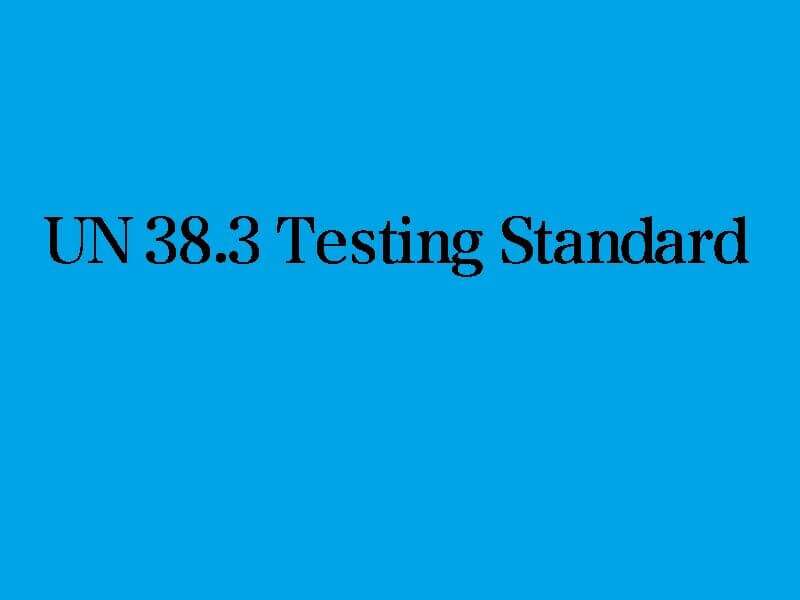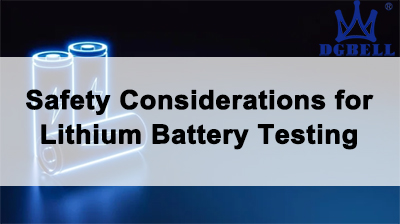Bài viết mới
Thử nghiệm nhiệt độ pin Lithium ion
Về An toàn của Pin Lithium EV — Sự thoát nhiệt
Categories
- Company News 13
- Exhibitions 10
- News 1
- Test Chambers Knowledge 234
Nội dung chính

What is UN Manual of Tests and Criteria Part III Subsection 38.3
In most of the guides of one equipment, you maybe find that it should be by the standard called UN Manual of Tests and Criteria Part III Subsection 38.3 ( also known as UN 38.3 Testing).
You must wonder what exactly it is.
Today’s guide will enable you to have a detailed knowledge of it.
Firstly, the UN 38.3 Testing Manual of Tests and Criteria is a collection of criteria, test methods, and procedures.
It is applied for the classification of dangerous goods according to the provisions of the “United Nations Recommendations on the Transport of Dangerous Goods, Model Regulations”.
Besides, it also finds usage in identifying chemicals presenting physical hazards according to the “Globally Harmonized System of Classification and Labelling of Chemicals” (GHS).
This manual has been regularly updated and amended every two years.
Since 01. January 2019 the 6. Revised edition of the UN Manual of Tests and Criteria, Amendment 1 is valid.
You could find the revised editions of Amendment 1 under this link:
Besides, if you want to find the English version of the UN 38.3 test manual, you could log in to the hyperlink as follows:
UN 38.3 battery testing I am gonna introducing is part III of this manual, which describes in subsection 38.3.
It covers 8 test modules, which are also called T.1 to T.8 test:
T1 – Altitude Simulation (Primary and Secondary Cells and Batteries)
T2 – Thermal Test (Primary and Secondary Cells and Batteries)
T3 – Vibration (Primary and Secondary Cells and Batteries)
T4 – Shock (Primary and Secondary Cells and Batteries)
T5 – External Short Circuit (Primary and Secondary Cells and Batteries)
T6 – Impact (Primary and Secondary Cells)
T7 – Overcharge (Secondary Batteries)
T8 – Forced Discharge (Primary and Secondary Cells)
The Application Scope of UN 38.3 Testing
UN 38.3 Testing can simulate significant environmental, mechanical, and electrical stresses to test lithium-ion batteries’ ability to withstand the unpredictable conditions incurred during transport.
As we all know, the lithium-ion battery is classified as a dangerous good.
They can pose a safety risk if not tested and properly packaged following the transport regulations.
The international regulation will differ if the batteries are transported by different means.
Therefore, before lithium-ion batteries can be brought to the market, they must have successfully passed certain tests.
These tests can simulate transport conditions like pressure, temperature, crush, humidity, etc.
Hence, they can help you ensure the safety of your lithium-ion battery or cells during shipping.
Lithium Ion Battery Testing Standards
There are mainly three standards for testing lithium-ion battery:
UN/DOT 38.3 5th Edition, Amendment 1 – Recommendations on the Transport of Dangerous Goods
If you want to ship a lithium-ion battery across the world by air, rail, road, or truck, you will need to ensure that your batteries have passed UN/DOT 38.3.
Popular in many countries’ shipments of dangerous goods regulations, this standard can ensure the transportation safety of all lithium-ion cells and batteries.
UN/DOT 38.3 covers 8 test modules, whose difficulty level differs a lot.
For example, the altitude test is intense and long-running, which is the easiest to pass.
IEC 62133
IEC 62133 is the standard in accord with international compliance. UN 38.3 transportation testing (see the previous section) is an integral requirement but does not need to be repeated.
The standard includes four tests: 2.2 Molded Case Stress; 3.2 External Short Circuit; 3.3 Free Fall; 3.6 Overcharging of Battery
Compared to the integral requirements of UN 38.3, these tests are relatively easy to pass.
UL 2054
UL 2054 is an important U.S. compliance standard involving roughly double the number of tests found in the UN or IEC requirements: 7 electrical tests; 4 mechanical tests; 4 battery enclosure tests; 1 fire exposure test; 2 environmental tests.
UL has released the first edition of UL 62133, which chime in with IEC 62133, 2nd Edition. UL 2054 and UL 62133 compete for the same test space by nature although their requirements vary a lot.











